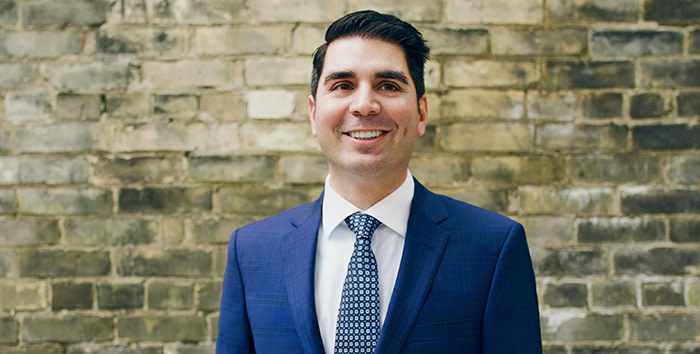Canada focus: tech upgrades give clients greater value for money

Simply sign up to the Professional services myFT Digest -- delivered directly to your inbox.
In 2015, lawyers at Gowling WLG realised that the firm’s practice writing commercial loan agreements was losing clients to cheaper rivals, a development that threatened to have a significant effect on the firm’s global revenue. That recognition began a two-year drive to phase out billable hours and start charging lenders and businesses per loan completed.
“It was totally a matter of understanding the market and being defensive,” says Mark Tamminga, a partner at Gowling, who led the overhaul. With the fees for each loan capped, Mr Tamminga’s team had to renew their focus on efficiency.
Many of Canada’s largest law firms are grappling with the same question: how to respond to clients’ demands for new billing structures while maintaining profits. Nearly 90 per cent of Canadian firms still use billable hours, but competitive pressures have led about 70 per cent of them to offer at least one alternative, according to a 2018 survey by Canadian Lawyer magazine.
That pressure has increased dramatically, especially in the corporate legal sector, says Trevor Farrow, professor at Osgoode Hall Law School in Toronto. “The challenge for lawyers over the next five to 20 years is to take a long look at what services they provide, what services can be automated, what services can be commoditised, and what services still need the bespoke labour of lawyers giving personalised legal advice,” he says.
Mr Tamminga says his team now think of each loan agreement as a product, and use technology to produce them efficiently. The firm’s software development group built a database to record details of each loan, hooked up to software that automatically generates customised loan documents. The firm’s clients can log on to see progress on their paperwork in an online portal, rather than calling or emailing for updates.
Another important aspect, says Mr Tamminga, is handing work to “the lowest-cost competent resource”, such as legal clerks who do the bulk of the work. Since its launch in 2017, this new approach — called LendR — has been implemented at four Gowling offices in Canada.
Flat fees can also prove useful in longstanding client relationships when the pressure to cut costs intensifies. After decades of paying the law firm Borden Ladner Gervais by the hour, the Healthcare Insurance Reciprocal of Canada (Hiroc) — an insurer serving healthcare providers — was anxious to see greater efficiency and lower costs. It wanted more for less.
Following years of experiments, the two groups agreed that the insurer would pay an annual fee based on an estimate of the number of files it would refer to the law firm. Because of its database, the insurer says that those estimates are usually accurate to within about 10 out of about 1,800 hospital insurance files going to BLG each year.
The law firm and the insurer have agreed to reinvest some of the money saved under this arrangement into a shared innovation fund. The fund has paid for synchronising the case management software used by the firm and the insurer, and for writing user-friendly guides for hospital staff on how to handle incidents such as sexual assault.
“We have to make sure that we do not become so efficient that we starve our lawyers out of funds,” says Mike Boyce, vice-president at Hiroc, who recognises this might hurt the quality of legal representation.
“Predictability is so important,” says Cindy Clarke, head of specialised litigation at BLG, adding that many more clients want such pricing structures instead of billable hours. BLG can now analyse its own past cases to estimate how much time a new file will take, and what level of expertise it will demand, in order to quote a price, says Ms Clarke.
“We have brought in some incredible talent on the business side around change management and data analytics,” she adds.
Bennett Jones has also hired expertise from outside the legal industry. Gino Scapillati, the vice-chair for strategy and innovation, joined from PwC last year after consulting on the firm’s strategic review.
“Our clients ask us: ‘How are you using technology to be more efficient?’ or ‘How are you realigning your business model to produce better value?’ ” he says. “That’s part of their criteria in selecting legal services.”
Mr Scapillati says that the firm offers many pricing structures, such as basing their fees on the amount of money its client makes, or saves, based on their legal advice. Drawing on his business experience, he has also started to track other measures of performance, such as the number of internal referrals lawyers make and the number of meetings with executives. This encourages collaboration and developing new clients.
At Gowling, meanwhile, lawyers can bill for time spent working on approved innovation projects, as if those were client hours. “It’s a way of rewarding people and inducing people to work on innovation,” says Mr Tamminga.
The law group Osler has arguably taken the drive to innovate a step further by developing online legal tools that it offers for free. These include an interactive guide to doing business in Canada, and a program that scans for intellectual property problems in open source software.
“It shows the market that we are serious about innovation,” says Michael Fekete, national innovation leader at Osler. “Our focus has been on driving down the cost of traditional legal services.”
Technology: When a law firm becomes an incubator

If you want something done properly, do it yourself. That might have been the motto of Counter Tax Lawyers, a mid-sized Toronto firm, when it began developing a software tool called CounterMeasure in 2015.
“The legal technology market completely lacked what we wanted,” says Peter Aprile, the firm’s founder and chief executive. He describes the tool, which models the costs and benefits of various outcomes, as “GPS for tax law” because it is designed to help clients make better strategic decisions.
Having used the tool in-house for years, the firm is selling it to other lawyers. One of the group’s tax litigators, Natalie Worsfold, has become CounterMeasure’s project manager. “We run agile software development,” says Ms Worsfold, explaining that feedback from lawyers within the firm helps improve the technology.
“Essentially,” says Mr Aprile, “the law firm has been incubating the tech company.”
Innovative Lawyers North America Ranking 2018
View the full rankings here
- Top Innovative Law Firms: six of the best overall
- Most Innovative Law Firms: Business of Law
- Most Innovative Law Firms: Legal Expertise
- In-house
- Rule of Law | • In-house
- Collaboration
- Data, Knowledge and Intelligence | • In-house
- Managing and Developing Talent | • In-house
- New Business and Service Delivery Models | • In-house
- New Products and Services | • In-house
- Strategy and Changing Behaviours | • In-house
- Technology | • In-house
- Accessing New Markets and Capital | • In-house
- Enabling Business Growth and Transformation | • In-house
- Managing Complexity and Scale | • In-house
- Litigation & Disputes | • In-house
- Creating a New Standard | • In-house
- Canada: Legal Expertise
- Canada: Business of Law
Comments